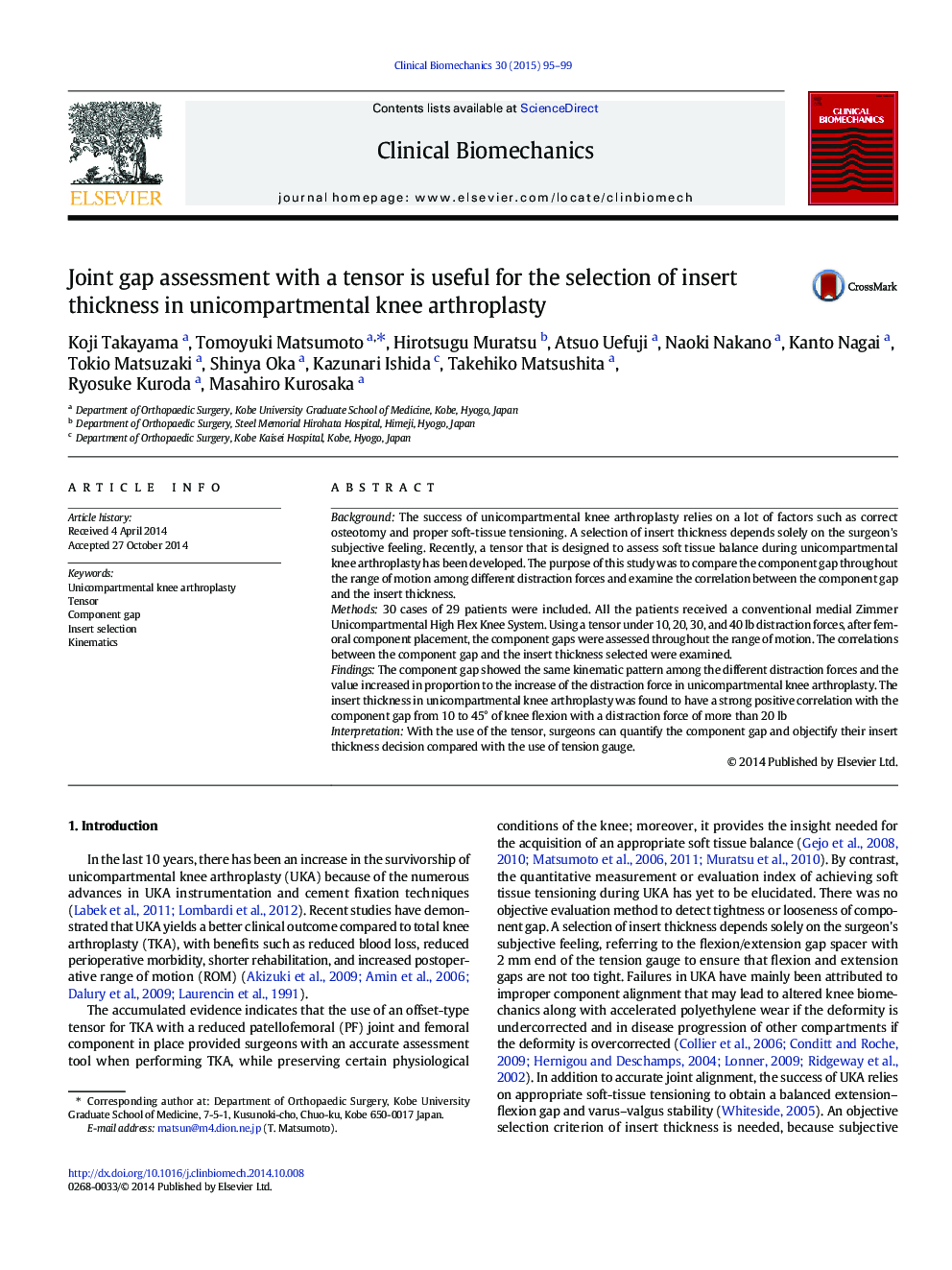| Article ID | Journal | Published Year | Pages | File Type |
|---|---|---|---|---|
| 4050267 | Clinical Biomechanics | 2015 | 5 Pages |
•Component gap was increased in proportion to the distraction force.•Insert size was correlated with the component gaps.•Surgeons can quantify the component gap with the tensor.•Surgeons can objectify their insert thickness decision.
BackgroundThe success of unicompartmental knee arthroplasty relies on a lot of factors such as correct osteotomy and proper soft-tissue tensioning. A selection of insert thickness depends solely on the surgeon's subjective feeling. Recently, a tensor that is designed to assess soft tissue balance during unicompartmental knee arthroplasty has been developed. The purpose of this study was to compare the component gap throughout the range of motion among different distraction forces and examine the correlation between the component gap and the insert thickness.Methods30 cases of 29 patients were included. All the patients received a conventional medial Zimmer Unicompartmental High Flex Knee System. Using a tensor under 10, 20, 30, and 40 lb distraction forces, after femoral component placement, the component gaps were assessed throughout the range of motion. The correlations between the component gap and the insert thickness selected were examined.FindingsThe component gap showed the same kinematic pattern among the different distraction forces and the value increased in proportion to the increase of the distraction force in unicompartmental knee arthroplasty. The insert thickness in unicompartmental knee arthroplasty was found to have a strong positive correlation with the component gap from 10 to 45° of knee flexion with a distraction force of more than 20 lbInterpretationWith the use of the tensor, surgeons can quantify the component gap and objectify their insert thickness decision compared with the use of tension gauge.
